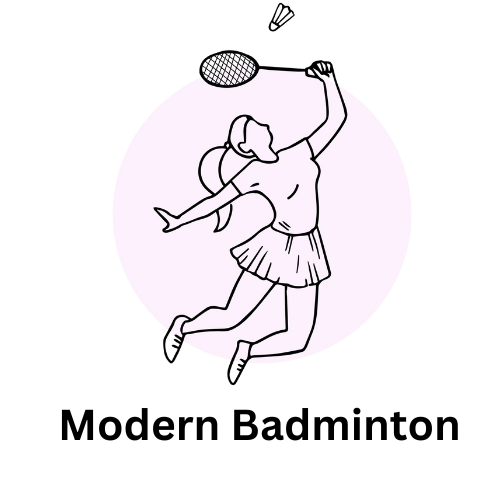
Introduction to Flexibility in Badminton
- Understanding the concept of flexibility: Flexibility is the ability of your muscles and joints to move through their full range of motion. It helps you perform various movements with ease and reduces the risk of injury.
- Importance of flexibility in sports, particularly badminton: In badminton, flexibility is crucial. It allows players to reach for shots, move quickly across the court, and maintain balance. Good flexibility can improve your game and help you play longer without getting tired.
Benefits of Flexibility in Badminton
- Enhancing badminton agility: Flexibility helps players move quickly and smoothly across the court. When your muscles are flexible, you can reach for the shuttlecock with ease. This agility can make a big difference in your game.
- Improving overall badminton performance: Flexible muscles allow for better control and power in your shots. When you can stretch and move easily, you can hit the shuttlecock more accurately and with greater force. This can lead to winning more points.
- Reducing risk of injuries: Flexibility helps prevent injuries. When your muscles are loose and flexible, they are less likely to get strained or torn. This means you can play more often and with less pain.
Improving Badminton Flexibility
Flexibility Exercises for Badminton
Flexibility is key in badminton. It helps you move better and avoid injuries. Here are some exercises to improve your flexibility:
- Dynamic StretchesDynamic stretches involve moving parts of your body and gradually increasing reach, speed of movement, or both. These stretches are great for warming up before a game.
- Arm Circles: Swing your arms in large circles to loosen your shoulder joints.
- Leg Swings: Swing your legs forward and backward to stretch your hamstrings and hip flexors.
- Lunges: Step forward into a lunge position to stretch your thighs and hips.
- Static StretchesStatic stretches involve holding a stretch for a period of time. These are best done after playing to help your muscles relax.
- Hamstring Stretch: Sit on the ground and reach for your toes to stretch your hamstrings.
- Quadriceps Stretch: Stand on one leg, pull the other foot towards your buttocks to stretch your quads.
- Shoulder Stretch: Pull one arm across your body and hold it with the other arm to stretch your shoulder muscles.
- Yoga Poses for FlexibilityYoga can greatly improve your flexibility. Here are some poses that are especially helpful for badminton players:
- Downward Dog: This pose stretches your hamstrings, calves, and shoulders.
- Cobra Pose: This pose stretches your chest and strengthens your back.
- Child’s Pose: This pose stretches your back and helps you relax.
| Exercise Type | Benefits | Examples |
|---|---|---|
| Dynamic Stretches | Improves range of motion and warms up muscles | Arm Circles, Leg Swings, Lunges |
| Static Stretches | Increases flexibility and relaxes muscles | Hamstring Stretch, Quadriceps Stretch, Shoulder Stretch |
| Yoga Poses | Enhances flexibility and balance | Downward Dog, Cobra Pose, Child’s Pose |
Flexibility Training for Badminton
- Importance of Regular Flexibility TrainingFlexibility training helps badminton players move better on the court. It reduces the risk of injuries and improves performance. Regular stretching keeps muscles loose and ready for action.
- Creating a Flexibility Training ScheduleTo get the best results, players should have a schedule. This can include stretching before and after practice. A good plan might look like this:
Day Activity Monday Dynamic stretches Wednesday Static stretches Friday Yoga poses - Monitoring Progress in FlexibilityTracking progress is important. Players can use a journal to note changes in their flexibility. They can also take measurements, like how far they can reach. This helps them see improvements over time.
Stretching Routines for Badminton Players
-
Pre-game Stretching Routine
Before you start playing, it’s important to warm up your muscles. This helps prevent injuries and improves your performance.
- Arm Circles: Stand with your feet shoulder-width apart. Extend your arms and make small circles. Do this for 30 seconds.
- Leg Swings: Hold onto a wall for balance. Swing one leg forward and backward. Repeat 10 times for each leg.
- Torso Twists: Stand with your feet apart. Twist your torso to the left and then to the right. Do this 15 times.
-
Post-game Stretching Routine
After playing, it’s crucial to cool down. This helps your muscles recover and reduces soreness.
- Hamstring Stretch: Sit on the ground with one leg extended. Reach for your toes and hold for 20 seconds. Switch legs and repeat.
- Quad Stretch: Stand on one leg and pull the other foot towards your buttocks. Hold for 20 seconds. Switch legs and repeat.
- Shoulder Stretch: Bring one arm across your chest and hold it with the other arm. Hold for 20 seconds. Switch arms and repeat.
-
Rest Day Stretching Routine
On your rest days, gentle stretching can keep your muscles flexible and ready for the next game.
- Cat-Cow Stretch: Get on your hands and knees. Arch your back up like a cat, then dip it down like a cow. Do this 10 times.
- Child’s Pose: Kneel on the ground and sit back on your heels. Stretch your arms forward and hold for 30 seconds.
- Butterfly Stretch: Sit on the ground and bring your feet together. Hold your feet and gently press your knees towards the ground. Hold for 30 seconds.
Badminton Mobility Drills
Improving your mobility on the badminton court is crucial for better performance. Here are some drills that can help:
- Drills to improve on-court mobility:
- Shadow Badminton: Move around the court without a shuttlecock, mimicking real game movements. This helps you get used to the court and improves footwork.
- Ladder Drills: Use an agility ladder to practice quick foot movements. Step in and out of the ladder squares as fast as you can.
- Drills to enhance flexibility:
- Dynamic Stretches: Perform stretches like leg swings and arm circles before playing. These help loosen your muscles.
- Yoga Poses: Incorporate poses like the Downward Dog and Warrior Pose into your routine. These poses improve overall flexibility.
- Drills to increase speed and agility:
- Suicide Runs: Sprint to different lines on the court and back. This drill boosts your speed and endurance.
- Jump Rope: Skipping rope can enhance your foot speed and coordination. Aim for quick, short jumps.
These drills are designed to make you a better player by improving your mobility, flexibility, speed, and agility. Consistent practice will lead to noticeable improvements on the court.
Case Studies: Role of Flexibility in Sports
-
Case Study 1: Professional Badminton Player
Meet Sarah, a professional badminton player. She has been playing at the top level for over 10 years. Sarah practices flexibility exercises daily. These exercises help her move quickly and reach for the shuttlecock with ease.
Key Insight: Flexibility helps professional players like Sarah avoid injuries and perform better.
Flexibility Routine Benefits Dynamic Stretching Improves range of motion Static Stretching Reduces muscle stiffness -
Case Study 2: Amateur Badminton Player
John is an amateur badminton player who plays in local tournaments. He started including flexibility exercises in his routine six months ago. John noticed that he can now play longer matches without feeling tired.
Key Insight: Flexibility helps amateur players like John improve their stamina and endurance.
Flexibility Routine Benefits Yoga Enhances balance and coordination Foam Rolling Reduces muscle soreness -
Case Study 3: Beginner Badminton Player
Emily is new to badminton. She started playing just three months ago. Emily’s coach advised her to do flexibility exercises. Now, she can move more freely on the court and is less likely to get injured.
Key Insight: Flexibility is crucial for beginners like Emily to learn proper movements and prevent injuries.
Flexibility Routine Benefits Basic Stretching Improves overall flexibility Light Yoga Builds foundational strength
Key Takeaways: Enhancing Badminton Performance through Flexibility
- Importance of flexibility in badminton: Flexibility helps players move quickly and reach for shots that are far away. It reduces the risk of injuries and helps in performing better on the court.
- Effective exercises and drills to improve flexibility: Regular stretching exercises like lunges, hamstring stretches, and shoulder stretches can improve flexibility. Drills that involve dynamic movements also help in enhancing flexibility.
- Role of regular training and stretching in maintaining flexibility: Consistent training and stretching are key to maintaining flexibility. Players should include stretching routines in their daily practice to keep their muscles flexible.
- Impact of flexibility on overall badminton performance: Flexibility improves a player’s range of motion, speed, and agility. It allows for better shot execution and helps in maintaining balance during fast-paced games.
| Key Aspect | Details |
|---|---|
| Importance | Reduces injury risk, improves reach and performance |
| Exercises | Lunges, hamstring stretches, shoulder stretches |
| Training | Consistent stretching and dynamic drills |
| Performance Impact | Better range of motion, speed, agility, and balance |
